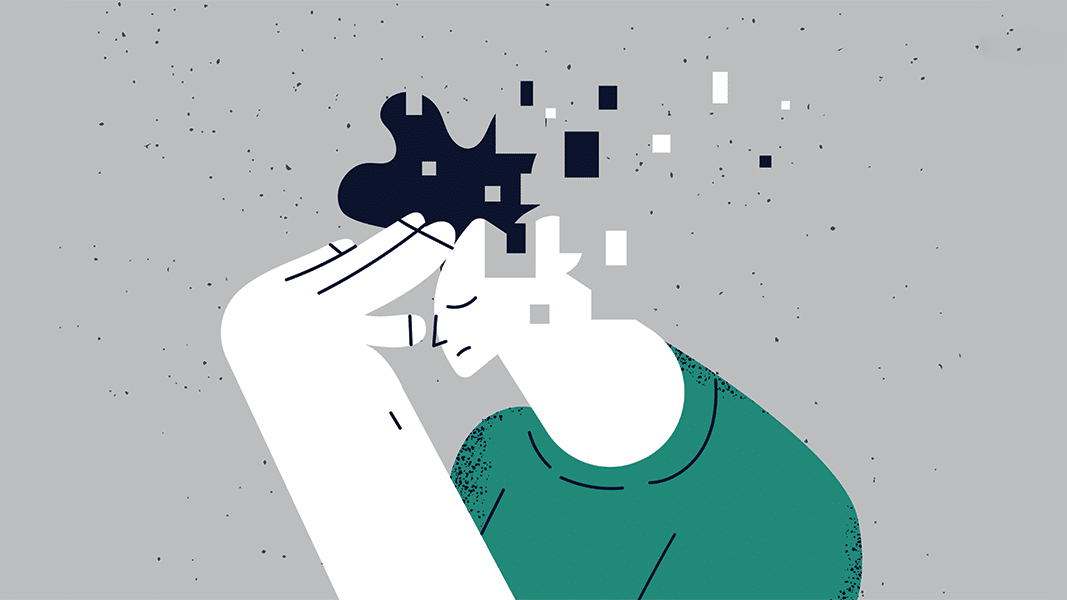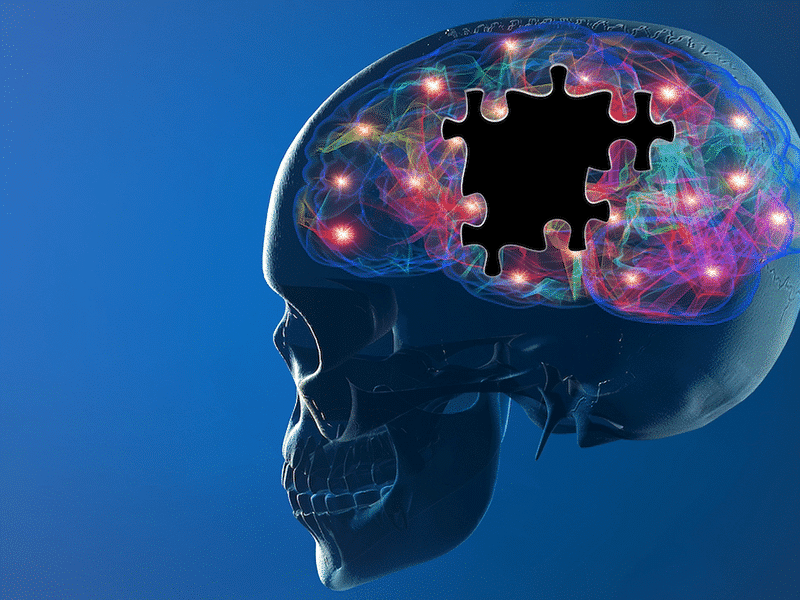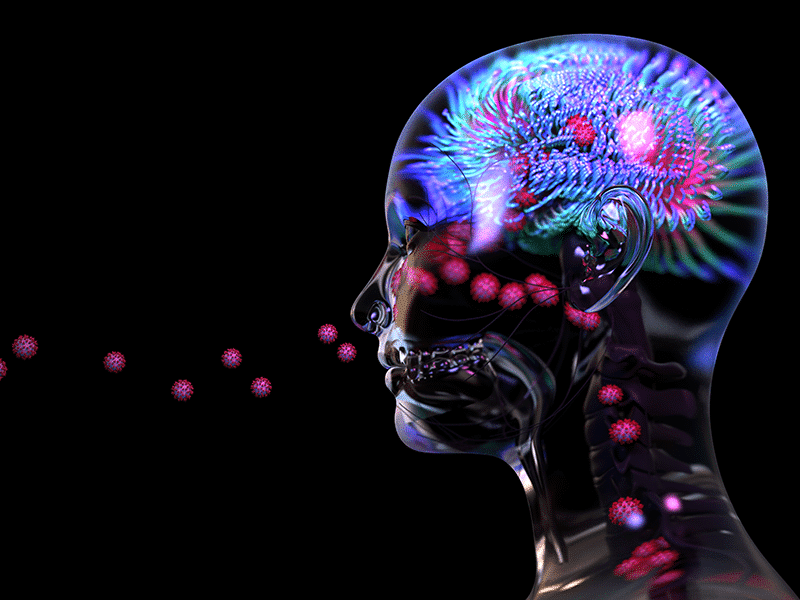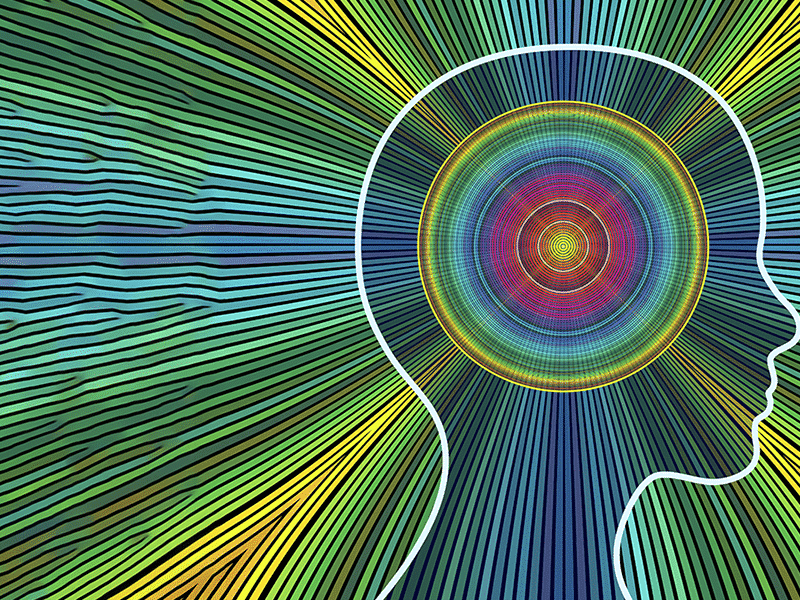Research Summary:
One of the most common neurodegenerative diseases and one of the most financially burdensome to modern society, Alzheimer’s disease begins with symptoms of forgetfulness, disorientation, mood swings, and loss of motivation. It progresses to the loss of bodily functions and death typically occurs in 3 to 9 years after diagnosis. Despite huge expenditures, no treatment to slow progress has been found although some do temporarily improve symptoms. In the brain, the disease is characterized by the buildup of beta-amyloid plaques (Aβ) and neurofibrillary tangles, the overactivation of glial cells (the immune cells of the brain) and loss of neuronal connections. The cause is unknown except for the ~2% of cases that arise from a dominant gene for early-onset familial Alzheimer’s disease.
A diverse body of research suggests using the phytocannabinoids or drugs that target the endocannabinoid system as a treatment for both the symptoms and disease progression of Alzheimer’s. In humans:
- 12 weeks of THC:CBD extract reduced agitation, apathy, irritability, sleep disturbances, eating disturbances, cognitive impairments and aggressive behaviors, leading to less caregiver distress
- In dementia patients, a cannabis oil with 30% CBD and 1% THC helped with agitation and aggression
- Nabilone (THC) improved agitation, dronabinol (THC) helped with anorexia and disturbances and a combination of CBD and THC helped dementia patients stop other meds, decrease rigidity and improved behavior
- In a case series of dementia patients, 15 days of CBD improved their symptoms
- One case study of microdosing THC for 2 years showed improved memory and in a case study of a patient with advanced Alzheimer’s, low levels of dronabinol (THC) allowed her to drop 3 out of her 6 medications while improving her emotional state and lessening aggression
- Surveys of caregivers find that they believe CBD to be a useful tool
- The endocannabinoid levels in the blood might be useful biomarkers for dementia and Alzheimer’s patients
In preclinical research, CBD helped the microglial cells to better destroy amyloid-β plaques, it protect the brain via its antioxidation ability and prevented disease progression via the scavenging of reactive oxygen species. In mice, CBD helped to maintain their spatial memory, reduce their anxiety and lessen fear-associated freezing as well as rescuing memory impairment. CBD also improved cognition and decreased anxiety as well as enhancing the immune system response and the pathway for autophagy (regulated cell recycling and digestion of damaged or unnecessary cellular components). In a mouse model of familial Alzheimer’s disease, CBD lessened symptoms, slowed cognitive decline and even modulated the expressions of genes related to Alzheimer’s. In mice, THC slowed memory decline and chronic use reduced their plaques and restored memory function. Low doses of THC decreased biomarkers of the disease and in computer simulations, THC destabilized the Aβ plaques. In a tissue model of Alzheimer’s disease, CBD lowered the aggregation of the tau proteins and 9 of the non-psychoactive cannabinoids helped to protect the neurons, lower inflammation, reduce oxidative damage and increase balance to the proteins and mitochondria (powerhouse of the cell).
The endocannabinoid system is a robust target for treating Alzheimer’s disease. In rats, activation of the CB1 receptor lessened cognitive impairment by lowering oxidative stress and enhancing neurogenesis (the creation of new brain cells). In mice, inhibiting the FAAH enzyme (which breaks down anandamide) lowered inflammation of the microglia via several different processes and in rats with dementia, protected the brain and preserved spatial learning and memory. In mice, a drug that blocks both FAAH and MAGL (the enzyme that breaks down 2-AG) lowered neuroinflammation, oxidative stress and levels of amyloid β plaques. Genetically, problems in endocannabinoid retrograde transmission seem to be a predictor of the disease. Most of all, the CB2 receptor is a key (and well-studied) target:
- In mice, activating CB2 helped to improve memory via the cholinergic system (a key component of our parasympathetic nervous system) and lowered overexcitation and protected the neurons of the hippocampus (memory area of the brain)
- In rats, CB2 activation protected the neurons against hyperexcitation
- In mice, CB2 activation lowered inflammatory cytokines, increased the brain growth factor BDNF, decreased plagues and improved various memory types
- In neurons of the mouse hippocampus, activating the CB2 receptor protected them from Aβ plaques
Other cannabinoids and related molecules have been shown to help. PEA seems to help via the astrocytes of the brain and in a tissue model of Alzheimer’s disease, PEA and luteolin (a flavonoid commonly paired with PEA) reduced neuronal inflammation. In a different cellular model, PEA protected the neurons and increased their survival. Some cannabis terpenes provided neuroprotection against the toxic neurofibrillary tangles. The diabetes drug metformin may help with neurogenesis and spatial memory via its regulation of MAGL.
From the Project CBD Archives:
Alzheimer’s Disease & the Endocannabinoid System
CBD, THC, and other cannabinoids show promise for treating neurodegeneration and improving cognitive function.
Cannabinoids for Alzheimer’s
Government scientists filed a patent for cannabinoids as antioxidants and neuroprotectants.
THC & CBD for Dementia
A pilot study demonstrates that cannabis extracts can be safely used for symptoms of severe dementia.
Full-Spectrum Brain Boost
The neuroprotective properties of CBD and other cannabis components.
Best Review Articles on Alzheimer’s & Dementia:
- 2022: An overview of the studies on using CBD to treat Alzheimer’s disease
Cannabidiol in the treatment and prevention of Alzheimer’s disease – a comprehensive overview of in vitro and in vivo studies - 2022: This review of Alzheimer’s disease looks at how the endocannabinoid system affects the microglial cells (immune cells of the brain)
Microglial Endocannabinoid Signalling in AD - 2022: A review of using cannabinoids for treating dementia
Cannabinoids for the treatment of dementia: summary of a Cochrane review - 2022: A review suggests exploring cannabinoids and psychedelics for the symptoms of Alzheimer’s
Cannabinoids and Psychedelics for Neuropsychiatric Symptoms of Alzheimer’s: Addressing Disparities Through Clinical Trials - 2021: This review takes a deep dive into the data on CBD for Alzheimer’s disease
Understanding the Modulatory Effects of Cannabidiol on Alzheimer’s Disease - 2021: This review looks at using PEA to treat cognitive dysfunction syndrome in pets (a model of Alzheimer’s)
Successful and Unsuccessful Brain Aging in Pets: Pathophysiological Mechanisms behind Clinical Signs and Potential Benefits from Palmitoylethanolamide Nutritional Intervention - 2021: This review looks at how the endocannabinoid system forms a bridge between Alzheimer’s disease and the gut microbiome
The Endocannabinoid System: A Bridge between Alzheimer’s Disease and Gut Microbiota - 2021: This review looks at how lowering the activation of endocannabinoid signaling in the brain’s microglia (immune cells) lessens the neuroinflammation of Alzheimer’s disease
Potentiation of microglial endocannabinoid signaling alleviates neuroinflammation in Alzheimer’s disease - 2021: A review of targeting the CB2 receptor for Alzheimer’s disease
Cannabinoid receptor 2 selective agonists and Alzheimer’s disease: An insight into the therapeutic potentials - 2021: A review of 15 studies using cannabinoids for dementia
Medical cannabinoids for treatment of neuropsychiatric symptoms in dementia: systematic review - 2021: This review looks at targeting FAAH and MAGL to treat Alzheimer’s disease
The role of endocannabinoid pathway in the neuropathology of Alzheimer’s disease: Can the inhibitors of MAGL and FAAH prove to be potential therapeutic targets against the cognitive impairment associated with Alzheimer’s disease? - 2021: This review suggests that cannabinoids may be uniquely suited to treating the dysfunctions of Alzheimer’s disease
The therapeutic benefits of natural cannabinoids in delaying the pathophysiology of Alzheimer’s disease - 2021: This review look at the many pathways CBD uses to treat and prevent Alzheimer’s
Roles of Cannabidiol in the treatment and prevention of Alzheimer’s disease by multi-target actions - 2021: This review looks at the power of PEA to protect the brain’s astrocytes and fight Alzheimer’s disease
Alternative Targets to Fight Alzheimer’s Disease: Focus on Astrocytes - 2021: This intriguing review suggests using cats as a model for Alzheimer’s disease as well as suggesting the efficacy of CBD
Feline cognitive dysfunction as a model for Alzheimer’s disease in the research of CBD as a potential treatment—a narrative review - 2021: A review of using cannabinoids for Alzheimer’s
Cannabinoid pharmacology and its therapeutic uses in Alzheimer’s disease - 2020: A new meta-review confirms that THC and CBD both inhibit the progression of Alzheimer’s plaques in animal models
Impact of Cannabis-Based Medicine on Alzheimer’s disease by Focusing on the Amyloid β- Modifications: A Systematic Study - 2020: A review of using THC and CBD for Alzheimer’s
A Review on Studies of Marijuana for Alzheimer’s Disease – Focusing on CBD, THC - 2020: A review of the alterations to the endocannabinoid system that occur in Alzheimer’s (22 studies)
Endocannabinoid system alterations in Alzheimer’s disease: a systematic review of human studies - 2020: The endocannabinoids interact with the muscarinic acetylcholine receptor (on which Aminatas mushrooms work) and this might be helpful Alzheimer’s
Crosstalk between the M1 muscarinic acetylcholine receptor and the endocannabinoid system: A relevance for Alzheimer’s disease? - 2020: A review of how CBD protects in epilepsy and Alzheimer’s (with nice charts)
Overview of cannabidiol (CBD) and its analogues: Structures, biological activities, and neuroprotective mechanisms in epilepsy and Alzheimer’s disease - 2020: Acetylcholine and the ECS for Alzheimer’s
Crosstalk between the M 1 muscarinic acetylcholine receptor and the endocannabinoid system: A relevance for Alzheimer’s disease? - 2019: Cannabinoids for the agitation and aggression of Alzheimer’s
Natural and Synthetic Cannabinoids for Agitation and Aggression in Alzheimer’s Disease: A Meta-Analysis - 2018: Cannabinoids for the neuropsychiatric symptoms of Alzheimer’s
Cannabinoids for the treatment of neuropsychiatric symptoms, pain and weight loss in dementia
Research Timeline
- 2022: In a cellular model of Alzheimer’s, an anandamide analogue called N-linoleyltyrosine (NITyr) increased brain growth factors and protected the cells from autophagy (cellular suicide) via the CB2 receptor
N-linoleyltyrosine protects neurons against Aβ 1-40-induced cell toxicity via autophagy involving the CB 2/AMPK/mTOR/ULK1 pathway - 2022: In a rat lesion model of Alzheimer’s disease, the neural insult causes upregulation of CB1 levels as well as a limited contribution from CB2
Cannabinoid Receptors and Glial Response Following a Basal Forebrain Cholinergic Lesion - 2022: In an older mouse model of Alzheimer’s, low doses of intranasal THC for 3 months significantly slowed memory decline
The Memory Benefit to Aged APP/PS1 Mice from Long-Term Intranasal Treatment of Low-Dose THC - 2022: In a mouse model of Alzheimer’s disease focused on the cholinergic system (a key component of our parasympathetic nervous system), activating the CB2 receptor helped improve scores on various tests of memory
The Influence of CB2-Receptor Ligands on the Memory-Related Responses in Connection with Cholinergic Pathways in Mice in the Passive Avoidance Test - 2022: In a patient with mild Alzheimer’s, microdosing of cannabis improved memory
Cannabinoid extract in microdoses ameliorates mnemonic and nonmnemonic Alzheimer’s disease symptoms: a case report
Though note, this patient microdosed for almost 2 years. - 2022: In a model of Alzheimer’s disease, CBD worked on the microglial (immune) cells to improve digestion of the amyloid-β plaques via the TRPV2 receptors as well as reducing neuroinflammation and improved functioning of the mitochondria (powerhouse of the cell)
Cannabidiol Enhances Microglial Beta-Amyloid Peptide Phagocytosis and Clearance via Vanilloid Family Type 2 Channel Activation - 2022: In Alzheimer’s patients, 12 weeks of THC:CBD extract reduced agitation, apathy, irritability, sleep disturbances, eating disturbances, cognitive impairments and aggressive behaviors, leading to less caregiver distress
Oral Thc: Cbd Cannabis Extract in Main Symptoms of Alzheimer Disease: Agitation and Weight Loss - 2022: In a rat model of Alzheimer’s disease, activating the CB2 receptor protected the neurons against hyperexcitation
Activation of Cannabinoid Receptor 2 Protects Rat Hippocampal Neurons against Chronic, Oligomeric A_-induced Neuronal Hyperexcitation - 2022: In a tissue model of Alzheimer’s disease, PEA and luteolin (a flavonoid commonly paired with PEA) reduces neuronal inflammation and astrocyte reactivity while restoring homeostasis of the oligodendrocytes via the PPAR nuclear receptors (regulators of genetic transcription)
Co-Ultramicronized Palmitoylethanolamide/Luteolin Restores Oligodendrocyte Homeostasis via Peroxisome Proliferator-Activated Receptor-α in an In Vitro Model of Alzheimer’s Disease - 2022: In a mouse model of Alzheimer’s disease, activating the CB2 receptor lowered overexcitation and protected the neurons of the hippocampus (brain’s memory area)
Activation of Cannabinoid Receptor 2 Protects Rat Hippocampal Neurons against Chronic, Oligomeric Aβ-induced Neuronal Hyperexcitation - 2022: A computer analysis of the efficacy of molecules extracted from cannabis leaves as a therapy for Alzheimer’s
Computational prediction of potential drug-like compounds from Cannabis sativa leaf extracts targeted towards Alzheimer therapy - 2022: In dementia patients, a cannabis oil with 30% CBD and 1% THC helped with agitation and aggression
Effects of Broad Spectrum Cannabidiol Oil on Behavioral Disturbances in Patients with Dementia: A Randomized Clinical Trial - 2022: In a worm model of Alzheimer’s, CBD protected the brain via its antioxidation activities
Effect of Cannabidiol on the Neural Glyoxalase Pathway Function and Longevity of Several C. elegans Strains Including a C. elegans Alzheimer’s Disease Model - 2022: In patients with Alzheimer’s or Parkinson’s, they had higher levels of endocannabinoids as well as small brain volumes in the regions associated with smell and taste
Possible role of endocannabinoids in olfactory and taste dysfunctions in Alzheimer’s and Parkinson’s patients and volumetric changes in the brain - 2022: In this search for genetic underpinnings to Alzheimer’s disease, researchers found problems in endocannabinoid retrograde transmission to be a predictor of the disease
Molecular Signatures of Mitochondrial Complexes Involved in Alzheimer’s Disease via Oxidative Phosphorylation and Retrograde Endocannabinoid Signaling Pathways - 2022: In a mouse model of Alzheimer’s, activating the CB2 receptor lowered inflammatory cytokines, increased BDNF (brain growth factor), protected the brain from damage, decreased amyloid plaques and neuronal lesions as well as improving recognition and learning memory
Improved cognition impairment by activating cannabinoid receptor type 2: Modulating CREB/BDNF expression and impeding TLR-4/NFκBp65/M1 microglia signaling pathway in D-galactose-injected ovariectomized rats - 2022: In a mouse model of Alzheimer’s, a drug that blocks both the FAAH and MAGL enzyme lowered neuroinflammation, oxidative stress and levels of amyloid β plaques but did not show cognitive improvements
Effect of the MAGL/FAAH Dual Inhibitor JZL-195 on Streptozotocin-Induced Alzheimer’s Disease-like Sporadic Dementia in Mice with an Emphasis on Aβ, HSP-70, Neuroinflammation, and Oxidative Stress - 2022: In a case series of dementia patients, 15 days of CBD improved their symptoms
Neuropsychiatric Symptoms in Dementia. The Added Value of Cannabinoids. Are they a Safe and Effective Choice? Case Series with Cannabidiol 3% - 2022: In a mouse model of dementia, CBD helped to maintain their spatial memory, reduce their anxiety and lessen fear-associated freezing
Cannabidiol (CBD) treatment improves spatial memory in 14-month-old female TAU58/2 transgenic - 2022: In a tissue model of Alzheimer’s disease, some cannabis terpenes provided neuroprotection against the toxic neurofibrillary tangles
Cannabis terpenes display variable protective and anti-aggregatory actions against neurotoxic β amyloid in vitro: highlighting the protective bioactivity of α-bisabolol in motorneuronal-like NSC-34 cells - 2022: In a mouse model of Alzheimer’s disease, low doses of THC decreased biomarkers of the disease
Low-Dose Delta-9-Tetrahydrocannabinol as Beneficial Treatment for Aged APP/PS1 Mice - 2022: In a worm model of Alzheimer’s, CBD prevented disease progression via the scavenging of reactive oxygen species
Cannabidiol protects against Alzheimer’s disease in C. elegans via ROS scavenging activity of its phenolic hydroxyl groups - 2022: In a tissue model of Alzheimer’s disease, CBD lowered the aggregation of the tau proteins
Cannabidiol Inhibits Tau Aggregation In Vitro - 2021: In a cellular model of Alzheimer’s disease, 9 non-psychoactive cannabinoids that helped to protect the neurons, lower inflammation, reduce oxidative damage and increase balance to the proteins and mitochondria (powerhouse of the cell)
Efficacy of non-psychoactive phytocannabinoids in a novel phenotypic drug-screening platform for old age-associated neurodegeneration - 2021: In humans, the endocannabinoid levels in the blood might be useful biomarkers for dementia and Alzheimer’s patients
Alterations of plasma endocannabinoid levels in MCI and dementia patients - 2021: In a mouse model of Alzheimer’s disease, CBD coated by nano-particles reduced brain plaques, increased CB1 and CB2 levels, and improved learning and memory
The Effect of Cannabidiol Coated by Nano-Chitosan on Learning and Memory, Hippocampal CB1 and CB2 Levels, and Amyloid Plaques in an Alzheimer’s Disease Rat Model - 2021: In a mouse model of Alzheimer’s disease, an analog of anandamide protected the brain via regulation of autophagy (the recycling system of the brain) via the CB1 and CB2 receptor
N-linoleyltyrosine exerts neuroprotective effects in APP/PS1 transgenic mice via cannabinoid receptor-mediated autophagy - 2021: In a rat model of Alzheimer’s disease, activation of the CB1 receptor lessened cognitive impairment by lowering oxidative stress and enhancing neurogenesis (the creation of new brain cells)
WIN55,212-2 Attenuates Cognitive Impairments in AlCl3 + d-Galactose-Induced Alzheimer’s Disease Rats by Enhancing Neurogenesis and Reversing Oxidative Stress - 2021: In rats fed a high-fat diet, CBD reduced insulin resistance and decreased the tau protein associated with Alzheimer’s disease
Cannabidiol – A phytocannabinoid that widely affects sphingolipid metabolism under conditions of brain insulin resistance - 2021: In neurons of the hippocampus, activating the CB2 receptor protected them from the Aβ plaques associated with Alzheimer’s
Effects of CB2 Receptor Agonist JWH133 on Aβ42-Induced Hippocampal Neurons - 2021: In a mouse model of Alzheimer’s, inhibiting the FAAH enzyme lowers inflammation of the microglia (brain immune cells) via several different cellular processes
Fatty Acid Amide Hydrolase (FAAH) Inhibition Modulates Amyloid-Beta-Induced Microglia Polarization - 2021: In human neurons and in C. elegans (a worm model for aging treatments), CBD prevents the neuron degeneration caused by the Aβ plaques associated with Alzheimer’s
Cannabidiol regulates CB1-pSTAT3 signaling for neurite outgrowth, prolongs lifespan, and improves health span in Caenorhabditis elegans of Aβ pathology models - 2021: In a rat model of dementia, enhancing endocannabinoid signaling protected the brain and preserved spatial learning and memory
Preservation of spatial memory and neuroprotection by the fatty acid amide hydrolase inhibitor URB597 in a rat model of vascular dementia - 2021: In computer simulations, THC destabilized the plaques of Alzheimer’s disease
Destabilization of the Alzheimer’s amyloid-β protofibrils by THC: A molecular dynamics simulation study - 2021: In a mouse model of familial Alzheimer’s disease, CBD lessened symptoms and slowed cognitive decline
Cannabidiol Ameliorates Cognitive Function via Regulation of IL-33 and TREM2 Upregulation in a Murine Model of Alzheimer’s Disease - 2021: A survey of caregivers of Alzheimer’s patients find that they believe CBD oil to be a useful tool
Attitudes, Beliefs, and Changing Trends of Cannabidiol (CBD) Oil Use Among Caregivers of Individuals with Alzheimer’s Disease - 2021: In a mouse model of Alzheimer’s, CBD reverses deficits in object recognition
Medium-Dose Chronic Cannabidiol Treatment Reverses Object Recognition Memory Deficits of APPSwe/PS1ΔE9 Transgenic Female Mice - 2021: In computer simulations, CBD decreases aggregation of the Aβ peptides
Component of Cannabis, Cannabidiol, as a Possible Drug against the Cytotoxicity of Aβ(31-35) and Aβ(25-35) Peptides: An Investigation by Molecular Dynamics and Well-Tempered Metadynamics Simulations - 2020: In humans, this case study of three patients showed the utility of cannabis for frontotemporal dementia (a particularly strange and difficult type of dementia that occurs in the frontal and temporal lobes of the brain — areas associated with personality, behavior and language)
Cannabinoids in the management of frontotemporal dementia: a case series - 2020: In a mouse model of Alzheimer’s, the dysregulation of endocannabinoid system components could be used as a biomarker of disease progression
Imbalance of Endocannabinoid/Lysophosphatidylinositol Receptors Marks the Severity of Alzheimer’s Disease in a Preclinical Model: A Therapeutic Opportunity - 2020: In mouse model of AD, CBD helped “on social recognition memory and spatial learning deficits” and Aβ40 plaque levels
Chronic Treatment with 50 mg/kg Cannabidiol Improves Cognition and Moderately Reduces Aβ40 Levels in 12-Month-Old Male AβPPswe/PS1ΔE9 Transgenic Mice - 2020: In a mouse model of AD, CBD helped by enhancing the immune system response and the pathway for autophagy (regulated cell recycling and digestion of damaged or unnecessary cellular components)
Cannabidiol (CBD) enhanced the hippocampal immune response and autophagy of APP/PS1 Alzheimer’s mice uncovered by RNA-seq - 2020: In rat brain cells, activating CB2 receptors protects from the damage of beta-amyloid peptides of Alzheimer’s
Activation of cannabinoid receptor 2 protects rat hippocampal neurons against Aβ-induced neuronal toxicity - 2020: In a cellular model of Alzheimer’s, the endocannabinoid-like lipid compound PEA protects the neurons and increases their survival
Astrocytic palmitoylethanolamide pre-exposure exerts neuroprotective effects in astrocyte-neuron co-cultures from a triple transgenic mouse model of Alzheimer’s disease - 2020: In a patient with advanced Alzheimer’s, low levels of THC (dronabinol) allowed her to drop 3 out of her 6 medications while improving emotional state and lessening aggression
Cannabinoid as Beneficial Replacement Therapy for Psychotropics to Treat Neuropsychiatric Symptoms in Severe Alzheimer’s Dementia: A Clinical Case Report - 2020: In tissue samples from patients with Alzheimer’s and in mouse models, increased MAGL (which breaks down 2-AG) could be a biomarker to suggest the use of the diabetic drug metformin to help with neurogenesis and spatial memory
Dysregulated expression of monoacylglycerol lipase is a marker for anti-diabetic drug metformin-targeted therapy to correct impaired neurogenesis and spatial memory in Alzheimer’s disease - 2020: In mice with AD, CBD improved cognition and decreased anxiety
Cannabidiol (CBD) Improves Cognition and Decreases Anxiety in the SAMP8 Mouse Model of Alzheimer’s - 2020: In mice with AD, treatment with THC reduced their plaques and restored memory function
Prolonged Tetrahydrocannabinol treatment reduces amyloid plaque deposition and restores memory function in the 5XFAD mouse model of Alzheimer’s disease - 2019: In humans with Alzheimer’s, nabilone (THC) improved agitation (39 patients in randomized double-blind crossover trial)
Randomized Placebo-Controlled Trial of Nabilone for Agitation in Alzheimer’s Disease - 2019: In mouse brain slices simulating AD, CBD protected the hippocampus – perhaps by PPARα
Cannabidiol Reverses Deficits in Hippocampal LTP in a Model of Alzheimer’s Disease - 2019: In humans, a pilot study in Geneva shows CBD/THC combo helps dementia patients (10 patients in a prospective observational study)
A pilot study in Geneva shows CBD/THC combo helps dementia patients - 2018: In microglia, heteromers of the cannabinoid receptors increase when activated and correlate to the dyskinesia from levodopa, suggesting these heteromers as a target
Receptor-heteromer mediated regulation of endocannabinoid signaling in activated microglia. Role of CB 1 and CB 2 receptors and relevance for Alzheimer’s disease and levodopa-induced dyskinesia - 2017: in humans with dementia, low levels of THC seem to be safe for balance and gait
Effects of tetrahydrocannabinol on balance and gait in patients with dementia: A randomised controlled crossover trial - 2018: In microglial cells, CB1/CB2 heterocomplexes could be a target for AD
Receptor-heteromer mediated regulation of endocannabinoid signaling in activated microglia. Role of CB1 and CB2 receptors and relevance for Alzheimer’s disease and levodopa-induced dyskinesia - 2017: In cells, CBD lessens oxidative stress, mitochondrial dysfunction and reactive oxygen species generation via Wnt/β-catenin pathway and PPARγ
Effects of cannabidiol interactions with Wnt/β-catenin pathway and PPARγ on oxidative stress and neuroinflammation in Alzheimer’s disease - 2016: In stem cells, CBD modulates the expressions of genes related to Alzheimer’s
Cannabidiol Modulates the Expression of Alzheimer’s Disease-Related Genes in Mesenchymal Stem Cells - 2015: In humans with dementia, low levels of THC were safe but did not reduce symptoms
Tetrahydrocannabinol in Behavioral Disturbances in Dementia: A Crossover Randomized Controlled Trial - 2015: In humans with dementia, low doses of THC are safe but not effective for neuropsychiatric symptoms
Tetrahydrocannabinol for neuropsychiatric symptoms in dementia: A randomized controlled trial - 2015: In mouse model of AD, JZL184 (MGL inhibitor) lessens neuroinflammation
Monoacylglycerol lipase inhibitor JZL184 reduces neuroinflammatory response in APdE9 mice and in adult mouse glial cells - 2015: In mouse model of AD, THC + CBD reduced learning impairment – reduced astrogliosis, microgliosis, and inflammatory-related molecules – substrates of the redox protein thioredoxin 2 and the signaling protein Wnt16
Cannabis-based medicine reduces multiple pathological processes in AβPP/PS1 mice - 2015: In mouse model of Alzheimer’s, ECS helped to regulate neuroinflammation
Endocannabinoid regulation of amyloid-induced neuroinflammation - 2014: In mouse model of AD, the CB1 expression is altered, suggesting a therapeutic target
Altered expression of the CB1 cannabinoid receptor in the triple transgenic mouse model of Alzheimer’s disease - 2014: In cell model of AD, THC lowers amyloid beta proteins and GSK, and enhances mitochondria function
The potential therapeutic effects of THC on Alzheimer’s disease - 2014: In mouse model of AD, CBD protected from onset and helped for symptoms of social withdrawal and facial recognition
Long-term cannabidiol treatment prevents the development of social recognition memory deficits in Alzheimer’s disease transgenic mice - 2014: In humans with AD, postmortem brain samples showed altered CB1 expression
Type-1 cannabinoid receptor activity during Alzheimer’s disease progression - 2014: In brain slices, B-amyloid suppresses CB1
β-Amyloid inhibits E-S potentiation through suppression of cannabinoid receptor 1-dependent synaptic disinhibition - 2014: In rats model of AD, cognition and memory improved by CBD
Chronic cannabidiol treatment improves social and object recognition in double transgenic APPswe/PS1∆E9 mice - 2014: In cells, CBD increases neuronal survival in model of AD by reducing apoptosis and decreasing amyloid precursor protein levels via PPARγ receptor
Cannabidiol promotes amyloid precursor protein ubiquitination and reduction of beta amyloid expression in SHSY5YAPP+ cells through PPARγ involvement - 2013: In mouse model of tauopathy, phytocannabinoids improve dopamine transmission and the pathology of tau and amyloid plaques
Natural cannabinoids improve dopamine neurotransmission and tau and amyloid pathology in a mouse model of tauopathy - 2013: In animal model of AD, ECS helped to clear the beta-amyloid’s across the blood-brain barrier
Role of the cannabinoid system in the transit of beta-amyloid across the blood-brain barrier - 2013: In mice, activating CB2 helps with AD
CB2 cannabinoid receptor agonist ameliorates Alzheimer-like phenotype in AβPP/PS1 mice - 2011: In the postmortem brains of Alzheimer’s patients, a look at the state of the ECS
Molecular reorganization of endocannabinoid signalling in Alzheimer’s disease - 2011: In mouse model of AD, CBD lessens the activation of the microglia
Cannabidiol and other cannabinoids reduce microglial activation in vitro and in vivo: relevance to Alzheimer’s disease - 2011: In rat model of AD, CBD’s help may be mediated by the PPARγ nuclear receptor, which reduces damage from reactive oxygen species
Cannabidiol reduces Aβ-induced neuroinflammation and promotes hippocampal neurogenesis through PPARγ involvement - 2008: In humans with dementia, nabilone helps with agitation
The cannabinoid receptor agonist nabilone for the treatment of dementia-related agitation - 2007: In mouse model of AD, CBD helps via several pathways
Cannabidiol in vivo blunts beta-amyloid induced neuroinflammation by suppressing IL-1beta and iNOS expression - 2006: In cells, CBD prevents beta-amyloid induced neuronal death via its ability to scavenge reactive oxygen species
Cannabidiol inhibits inducible nitric oxide synthase protein expression and nitric oxide production in beta-amyloid stimulated PC12 neurons through p38 MAP kinase and NF-kappaB involvement - 2006: In humans with severe dementia, THC helped for agitation at night (6 patients in an open-label pilot study)
Delta-9-tetrahydrocannabinol for nighttime agitation in severe dementia - 2006: In cell cultures, CBD helps in AD because it “inhibits hyperphosphorylation of tau protein”
The marijuana component cannabidiol inhibits beta-amyloid-induced tau protein hyperphosphorylation through Wnt/beta-catenin pathway rescue in PC12 cells - 2006: In cell cultures, CBD inhibits damage of beta-amyloids
CB1 receptor selective activation inhibits beta-amyloid-induced iNOS protein expression in C6 cells and subsequently blunts tau protein hyperphosphorylation in co-cultured neurons - 2006: In rodents, after insult with a beta-amyloid, 2-AG levels rise
Endocannabinoids and beta-amyloid-induced neurotoxicity in vivo: effect of pharmacological elevation of endocannabinoid levels - 2006: In tissue model of AD, compared to other drugs, ‘THC is a considerably superior inhibitor of Aβ aggregation’
A Molecular Link Between the Active Component of Marijuana and Alzheimer’s Disease Pathology - 2005: In brains of humans and in rats, cannabinoids protect by blocking microglial activation in senile plaques
Prevention of Alzheimer’s disease pathology by cannabinoids: neuroprotection mediated by blockade of microglial activation - 2004: In model of AD cells, pretreatment with CBD reduced reactive oxygen species (free radicals) and other protective effects
Neuroprotective effect of cannabidiol, a non-psychoactive component from Cannabis sativa, on beta-amyloid-induced toxicity in PC12 cells - 2003: In mouse model of AD, injecting beta-amyloid fragments into the brain causes amnesia – but this can be attenuated by blocking CB1 receptor
Amnesia induced by beta-amyloid fragments is counteracted by cannabinoid CB1 receptor blockade - 2003: In brains of deceased AD patients, CB2 and FAAH overexpressed – CB1 unchanged
Cannabinoid CB2 receptors and fatty acid amide hydrolase are selectively overexpressed in neuritic plaque-associated glia in Alzheimer’s disease brains - 1997: In humans with AD, dronabinol helped with anorexia and disturbance (15 patients in a placebo-controlled crossover design)
Effects of dronabinol on anorexia and disturbed behavior in patients with Alzheimer’s disease





